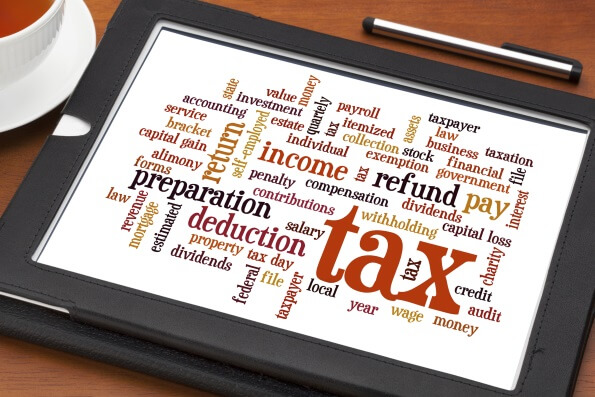If you operate your business through a limited company, you should be aware of the optimum salary/dividend mix to extract money from your company in the most tax-efficient way. This usually involves paying yourself a minimal salary and then dividends on top of this salary.
Paying yourself a salary
The optimum salary will be large enough to ensure that you maintain a full NI contribution record for the year, preserving your right to a future state pension, but low enough to avoid paying income tax and NI.
The national minimum/living wage regulations do not apply to a director, provided that there is no service contract with the company.
Paying dividends on top of your salary
Dividend income is subject to income tax, but at lower rates that salary income. Dividends are also NI-free for both the person receiving them and the paying company.
However, be careful – a company can only pay dividends to you, if it has enough distributable profits at the date the dividend is paid. HMRC look at dividends, and if not declared correctly they would seek to treat them as illegal – due to insufficient distributable profits or the failure to follow the rules in respect of approving and documenting dividends.
TAX YEAR 2018/19
Scenario 1: if you are a single director/shareholder
If you are a single director/shareholder in a company (i.e. you are the only person on the payroll), then the salary you should pay yourself in 2018/19 is £8,424. Why?
- This salary is not subject to income tax, as it is covered by your personal allowance of £11,850 in 2018/19.
- This salary is above the NI lower earnings limit (LEL) of £6,032 in 2018/19. The LEL is the limit above which you are given a full NI contribution record for the year, preserving your right to a future state pension.
- £8,424 is the NI primary threshold. If your salary is above this £8,424 threshold, you and your company will start to pay NI.
Hence, if you pitch your salary at the primary threshold but no higher, you avoid all income tax and NI. We suggest a monthly salary of £702 which equates to the annual primary threshold of £8,424.
You can then pay yourself by way of dividends on top of your salary. The first £2,000 of any dividend income is taxed at 0%. In addition, you still have £3,426 of used personal allowance (£11,850 less your salary of £8,424). Assuming you only receive income from your limited company, this means that you can pay yourself £2,000, plus £3,426, a total of £5,426 in tax-free dividends.
So in 2018/19, your tax-free income (salary and dividends) amounts to £13,850.
You can also choose to pay yourself additional dividends, without giving rise to NI. These additional dividends are subject to income tax at the following rates:
- Dividends within the basic rate limit (£34,500) – 7.5%.
- Dividends above the basic rate limit are charged at 32.5%, and above the higher rate limit of £150,000 at 38.1%.
Under this scenario, assuming you have no other taxable income, if you want to avoid paying higher rate tax on your dividends in 2018/19, you would pay yourself total dividends of up to £37,926. Of this total, £5,426 would be tax-free and £32,500 would be subject to income tax at 7.5%.
Scenario 2: if the company has more than one employee (including you) on the payroll
In this scenario, the salary/dividends mix is slightly different due to the availability of the £3,000 NI Employment Allowance. This allowance enables employers to not pay the first £3,000 of employer’s NI in the tax year. The allowance is not available to companies where the only person on the payroll is a director (i.e. scenario 1, single director/employee limited companies).
The availability of the employment allowance makes it more tax-efficient to pay a salary which equates to the personal allowance of £11,850 (£987 per month). This is because the additional salary is tax deductible by the company for corporation tax purposes, without incurring any additional employer NI liabilities.
However, if you have several employees, you will need to consider whether their salaries fully use the £3,000 employment allowance. If so, you would be better going for the scenario 1 salary of £8,424.
You can then choose to pay yourself dividends, without giving rise to NI, as follows:
- the first £2,000 of dividend income will be taxed at 0%;
- dividends above £2,000 but within the basic rate limit (£34,500) – taxed at 7.5%; and
- dividends above the basic rate limit are charged at 32.5%, and above the higher rate limit of £150,000 at 38.1%.
Under the scenario 2 salary, assuming you have no other taxable income, if you want to avoid paying higher rate tax on your dividends in 2018/19, you would pay yourself total dividends of no more than £34,500. Of this total, £2,000 would be tax-free and £32,500 would be subject to income tax at 7.5%.
Conclusion
If you are a limited company contractor/freelancer with no employees, the salary/dividend mix described in scenario 1 above should be preferable.
Otherwise, scenario 2 should be considered.
If you need advice on this or any other tax issue, please do get in touch for a no-obligation, free discussion – see our Contact Us page for how to reach us. We’d love to help.

